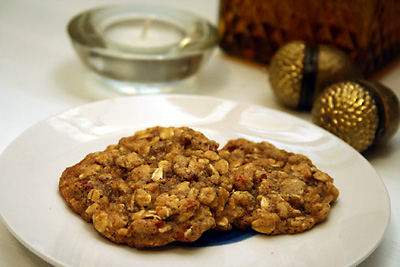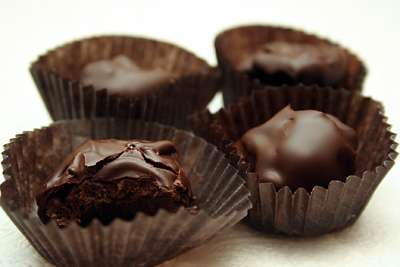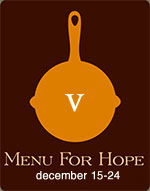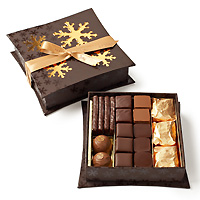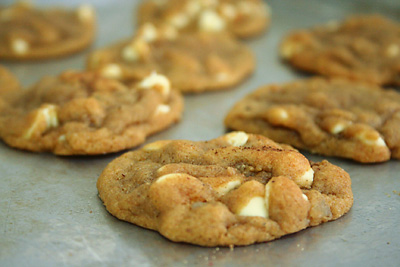Bacon Cookies
The idea hit me like a stroke of genius. If everything tastes better with bacon, surely dessert does too. A handful of them get it right, like Roni-Sue’s bacon buttercrunch. (Save yourself from Vosges’ bacon bar though.) But I wanted to try something new: “double” bacon cookies.
A couple years ago, The NY Times ran a recipe for bacon-dripping cookies, but there was no bacon in them. Other recipes have bacon bits, but they make no mention of drippings. Why oh why would you waste pork fat?
The draw of bacon cookies is the balance of sweet and salty, and I know of no other recipe that epitomizes the two like olive shortbread. I love them so much that I used them as a base for these experimental cookies. Of course I substituted the olives with crumbled bacon, and instead of butter, I used the drippings. After all that work, I expected to hit the jackpot. But my flash of genius was more like a flash in the pan. The cookies were nauseatingly rich. The texture was literally like sand; they wouldn’t hold together. Maybe I didn’t render enough fat (more on that later), or maybe you can’t make all-lard cookies. I think the bacon-and-lard idea is better suited for savory crackers. Not so avant-garde, I know.
Why did I even bother sharing this idea then? Because I kick myself when someone beats me to it. Like the time I made the crispiest pizza without a wood-fired oven or a pizza stone. A cast iron skillet did the trick. By the time I made it known, it was too late: Heston Blumenthal was credited with the idea. Never mind that I did it more than a year before he documented it in his book, In Search of Perfection. See what procrastination does?
Or sometimes I do start a popular idea, and it gets passed down so much that people forget the source. More than three years ago, I created a knock-off recipe for Nutella. One that had cocoa powder instead of melted chocolate, just like Nutella itself. At the time, I couldn’t find any such recipes on the Internet, so I shared it here. This Feb., the L.A. Times ran a similar recipe, citing the same book that I did. Heck, even the title was similar. “Nuts for Nutella” vs. “Nutty for Nutella.” Perhaps I’m paranoid, but in the past people have copied my recipe word for word and passed it off as their own.
Let this serve as a marker. If three months or three years from now, someone comes up with a great bacon shortbread recipe, perhaps a seed was planted here. For those who are wondering, here’s the recipe I used. I didn’t like it though. Sorry, no pictures, as I only had a pile of crumbs. These would probably be better with butter instead of drippings. Too lazy to try it again though.
P.S. – this dough is also good with seaweed or furikake.
Bacon Shortbread Cookies
Adapted from Susan Herrmann Loomis and The Traveler’s Lunchbox
Yield: about 34 cookies
1 to 1 1/2 lbs uncooked bacon, to yield 1/2 cup drippings and 1/2 cup bacon bits
3/4 cup powdered sugar, sifted or 1/4 cup plus 2 tablespoons granulated sugar, whizzed in a food processor until fine
1 Tablespoon neutral-flavored oil (Don’t get smart and try olive oil, peanut oil, etc. Your tastebuds will go into shock)
1 1/4 cups all purpose flour
1/8 teaspoon salt
Cook the bacon. The cleanest, unfussiest way is to bake it at 400° F in a large foil-lined baking sheet for about 20 min. Turn the bacon over half way through cooking. Don’t put the bacon on racks. The little grates are a pain to clean. Also, don’t be like me and bake it at 200° F for 3 hours, no matter how good it sounds. The fat won’t render all the way.
Reserve 1/2 cup of bacon fat and let it cool to room temperature. Crumble 1/2 a cup of bacon, and save the rest. It keeps for a long time in the freezer.
Preheat oven to 350° F. Line two baking sheets with parchment paper or foil.
In a large bowl or the bowl of an electric mixer, cream the bacon fat until it is soft. Mix in the sugar until blended, then drizzle in the oil and mix until combined. Add the flour and the salt, and mix gently but thoroughly until the dough is smooth, then add the bacon bits and mix until they are thoroughly incorporated into the dough.
With your hands, press the dough into the pan until it is 1/4-inch thick. Refrigerate the dough for at least 30 minutes, and up to 24 hours. Score the dough into rectangles with a knife.
Bake until the cookies are golden, about 15 minutes. Remove from oven and immediately cut the cookies while they are still hot. Cool on wire racks.
If you find that the middle pieces are still doughy, re-bake them in a preheated 300° F oven for about 10 minutes.



